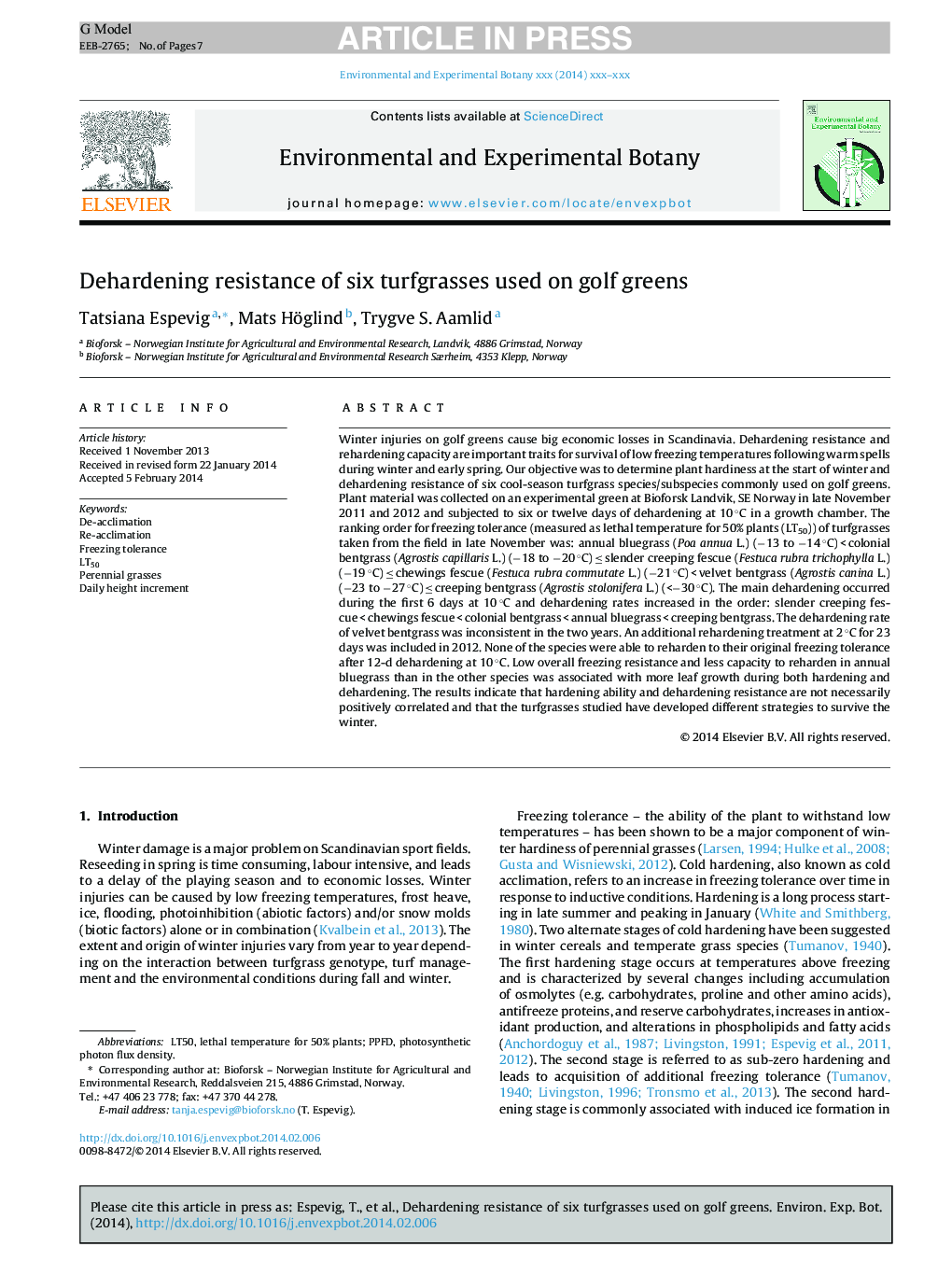| کد مقاله | کد نشریه | سال انتشار | مقاله انگلیسی | نسخه تمام متن |
|---|---|---|---|---|
| 6388888 | 1628071 | 2014 | 7 صفحه PDF | دانلود رایگان |
عنوان انگلیسی مقاله ISI
Dehardening resistance of six turfgrasses used on golf greens
ترجمه فارسی عنوان
مقاومت در برابر خشک کردن شش کنجد که در سبزیجات گلف استفاده می شود
دانلود مقاله + سفارش ترجمه
دانلود مقاله ISI انگلیسی
رایگان برای ایرانیان
کلمات کلیدی
موضوعات مرتبط
علوم زیستی و بیوفناوری
علوم کشاورزی و بیولوژیک
بوم شناسی، تکامل، رفتار و سامانه شناسی
چکیده انگلیسی
Winter injuries on golf greens cause big economic losses in Scandinavia. Dehardening resistance and rehardening capacity are important traits for survival of low freezing temperatures following warm spells during winter and early spring. Our objective was to determine plant hardiness at the start of winter and dehardening resistance of six cool-season turfgrass species/subspecies commonly used on golf greens. Plant material was collected on an experimental green at Bioforsk Landvik, SE Norway in late November 2011 and 2012 and subjected to six or twelve days of dehardening at 10 °C in a growth chamber. The ranking order for freezing tolerance (measured as lethal temperature for 50% plants (LT50)) of turfgrasses taken from the field in late November was: annual bluegrass (Poa annua L.) (â13 to â14 °C) < colonial bentgrass (Agrostis capillaris L.) (â18 to â20 °C) â¤Â slender creeping fescue (Festuca rubra trichophylla L.) (â19 °C) â¤Â chewings fescue (Festuca rubra commutate L.) (â21 °C) < velvet bentgrass (Agrostis canina L.) (â23 to â27 °C) â¤Â creeping bentgrass (Agrostis stolonifera L.) (<â30 °C). The main dehardening occurred during the first 6 days at 10 °C and dehardening rates increased in the order: slender creeping fescue < chewings fescue < colonial bentgrass < annual bluegrass < creeping bentgrass. The dehardening rate of velvet bentgrass was inconsistent in the two years. An additional rehardening treatment at 2 °C for 23 days was included in 2012. None of the species were able to reharden to their original freezing tolerance after 12-d dehardening at 10 °C. Low overall freezing resistance and less capacity to reharden in annual bluegrass than in the other species was associated with more leaf growth during both hardening and dehardening. The results indicate that hardening ability and dehardening resistance are not necessarily positively correlated and that the turfgrasses studied have developed different strategies to survive the winter.
ناشر
Database: Elsevier - ScienceDirect (ساینس دایرکت)
Journal: Environmental and Experimental Botany - Volume 106, October 2014, Pages 182-188
Journal: Environmental and Experimental Botany - Volume 106, October 2014, Pages 182-188
نویسندگان
Tatsiana Espevig, Mats Höglind, Trygve S. Aamlid,
